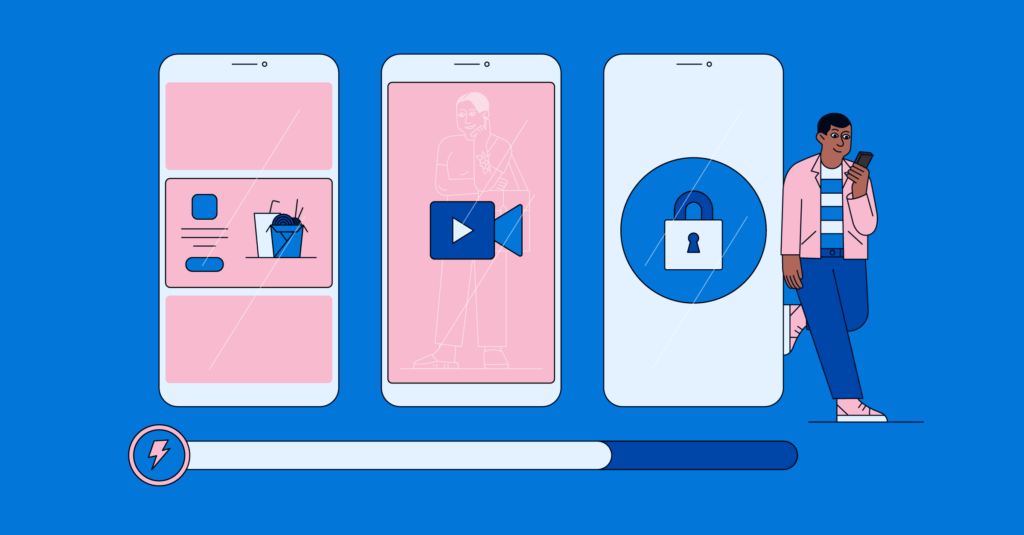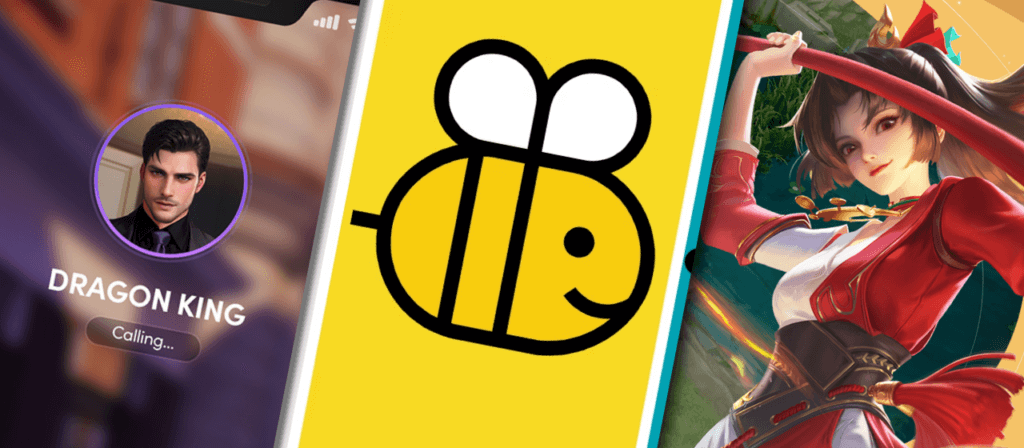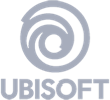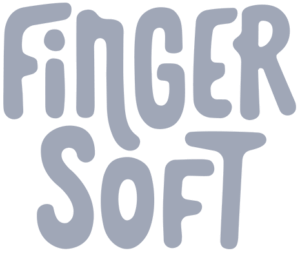Join us as we break down the best ways to build a winning User Acquisition (UA) strategy for your mobile game. This episode of the Mobile Games Playbook is about all things UA. In the crowded mobile gaming market, cutting through the noise and figuring out how to acquire users can be challenging.
![]()
![]() Spotify, BuzzSprout, TuneInRadio, iHeartRadio
Spotify, BuzzSprout, TuneInRadio, iHeartRadio
– If you enjoy the episode, remember to hit subscribe!
Join our expert guests, Kentaro Sugiara, Senior Performance Marketing Manager at Rovio, and Christie Crable, Head of Activations at GameRefinery, who will share actionable insights and proven techniques to help you develop a successful user acquisition (UA) strategy. Whether you’re a seasoned game developer or just starting out, this episode of the Mobile Games Playbook offers a roadmap to navigating the ever-evolving world of mobile UA.
You can also watch the episode on YouTube:
Topics we will cover in this episode:
- Introduction
- User acquisition in mobile gaming
- Angry Birds 2 and UA strategies
- Creative strategies and challenges
- Exploring different channels
- The role of AI in user acquisition
- Future of user acquisition and AI integration
Read transcript
Introduction
Jon Jordan
Hello, and welcome to the mobile games playbook. Thanks for tuning in for another episode. This is a podcast all about what makes a great mobile game, what is and isn’t working for mobile game designers, and all of the latest trends. I’m your host, John Jordan. Joining me today are two experts. I have Christie Crable, Activations Manager at Liftoff. How’s it going, Christie?
Christie Crable
Hey, nice to be here. Thanks for having me.
Jon Jordan
Also suitably attired, we have Kentaro Sugiura, a UA manager at Rovio. How’s it going, Kentaro?
Kentaro Sugiara
I’m okay. How are you?
Jon Jordan
You got the official blazer on there. That’s telling people that today, we’re talking about user acquisition. I guess that gave the game away by giving them your job title.
User acquisition in mobile gaming
Jon Jordan
So, UA in the mobile space has always been one of those evergreen subjects. We’re always sort of coming back to it. It’s always very dynamic. There are always new things happening. But I guess there’s always some sort of best practice we can discuss, and we’ll sort of go through that in today’s podcast. I would say we’re going to talk, I think, specifically more about the sort of casual game sort of UA. There’s an enormous range of products in MOA gaming, and there are particular ways in which you might want to address that for different kinds of genres, but we’ll sort of keep it on the casual level today. So, I wanted to kick off with you, Kentaro. You are the sort of the expert day-to-day UA manager at Rovio. At a high level, could you tell us some of the trends you’ve been seeing over the last few years? Because you’ve had a fairly decent career in the sector. So, what are the headline figures and headline trends you’ve been seeing?
Kentaro Sugiara
Yeah, I’ve been observing the high compression in the market for a few years. The compression in the market is getting bigger and bigger. So, in a casual space now, the CPI is increasing. So, if you want a sustainable UA campaign, you also need some product updates. You need to have a higher ARPU. That’s the one trend. And to…
Some casual developers are introducing mini-games or other things to reduce CPI. This is because you make a game more for a broad audience. So that’s one trend I’ve been observing.
Jon Jordan
Christie, you’re not involved on a day-to-day level like Kentaro, but what do you see, I guess, as a one-step removed from your overview of UA?
Christie Crable
Yeah, I want to echo what Kentaro is saying. We’re seeing many casual games add a mini-game element to expand their audiences. A good example of this is Royal Match, which recently added a casino mini-game. It just helps them expand their audience to target users who might have different motivations or be interested in different kinds of game features, get them into the game, and then get them hooked.
Jon Jordan
And I guess this sort of already highlights the, I would say it’s attention, maybe it’s not attention, but obviously, sort of UA is, you have a game that you’re sort of really proud of, and you want to get that game in front of the biggest audience you can. Because you think this game is going to be great. They’re going to love it. We’re going to generate revenue either through in-app purchases or advertising. But equally, you then get in this situation where, as Kentaro’s talking about, it’s very competitive as a market, and other people in that same genre think their game is excellent as well. And then you have this tension of how specifically do we advertise that game or, you know, it’s interesting that people are saying, well, we’ll modify our game to add some more gameplay so we can change our advertising. So it’s quite an exciting sort of creative tension about how UA is now feeding back into product design, which, for a total outsider, seems like quite a significant change that’s happened over recent years.
Christie Crable
Yeah, the push and pull are important, though. The UA managers are on the front lines. They’re the ones who know which kinds of creativity resonate well with the target user. Suppose they see that a particular feature highlighted in the creative is working or that a particular mini-game is resonating. In that case, they can return that feedback to the product team and expand the product. I think that the feedback loop is really important. We’re seeing that actually with Kentaro, your game Angry Birds 2. You’re in that market space, and Angry Birds has done a great job of expanding with mini-games in the PVP and PVE space, so it’s like adding that level of competition that keeps those users engaged and wanting to come back and wanting to play.
Angry Birds 2 and UA strategies
Jon Jordan
Can you talk a bit more about that, Kentaro? I remember when Angry Birds 2 came out. It was what you’d expect an Angry Birds game to be. How has that changed, as you want to expand it to new audiences with different marketing, and how has that feedback loop into the product work?
Kentaro Sugiara
Yes, so Angry Birds 2 has a lot of minigame features. So, as Christie mentioned, we do have the PVP feature, which is called the Arena. We also have Tower of the Fortune, which is a bit like a roulette or dice function. You have a few cards, and you need to choose one card and you get some reward.
So, we expand our audience by adding new features. From the UA side, specifically for creatives, we try to enhance the game’s elements and attract different kinds of users.
Jon Jordan
Being part of the UA team, how does that feedback work when you’re talking to the product team? Have they had to be more flexible? Do they find that sort of a positive thing where they go? Great, we can add these new things into the game. Sometimes, I imagine some creatives going well. This is my game, and I’m unsure if I want to add a mini-game. How does that flow happen?
Kentaro Sugiara
Yes. Our product team is very tuned to what’s happening in the UA, especially in the UA creative. So, we do have regular sessions to talk about creatives. Regarding the mini-game, we are still developing with Angry Birds 2. At Rovio, we see some great results in terms of user engagement with the mini-games.
With Angry Birds 2, it’s challenging. There are a few reasons. One of the reasons is that our game is landscape, while most other places are portrait. So we need to adjust the UI from portrait to landscape or vice versa, depending on what kind of idea we have. If the concept is more from the UA side, it’s portrait. And then, we need to find a way to make this portrait, the playable minigame, into landscape. And if the idea comes from the product team, vice versa. So this is one of the challenges. Also, we do see the lack of minigames; it’s not a problem. The problem is finding a mini-game that can scale on the UA and attract the existing product users. So I think that’s one of the biggest challenges we have at this moment.
Jon Jordan
It’s also, I mean, coming back to specifically Angry Birds 2, One of the advantages you have in that game is you have very recognisable characters—some of the most recognisable characters in mobile gaming. Obviously, Angry Birds is one of the big, probably one of the first big, you know, mobile game successes, and whatever we are now over a decade on, it’s very recognisable globally. Is that something that sort of you can leverage in terms of your UA that you can, you know, you don’t have to have this sort of context where it’s a game I’ve never heard of, and who are these characters? Is that a positive thing that you can use?
Kentaro Sugiara
Yes, having a globally recognizable IP helps our UA operation. More specifically, we see a better IPM thanks to the Angry Birds brand. Our internal study shows the IPM difference between the Angry Birds and non-Angry Birds creatives. We do see a significant performance uplift with Angry Bull characters.
Creative strategies and challenges
Jon Jordan
Yeah, yes. You’d like to see that, so break out from Angry Birds. I mean, Christie, it’s something you can discuss. When I say tension, one of the things we have seen and some kind of, I guess, mentioning no names, but we can sometimes see the UA creative and the actual game sort of diverging. Over the years, sometimes that’s become a funny meme, and sometimes it’s not. Do we think people have generally found the sweet spot where, you know, you’re not sort of selling someone a game that you can’t then replicate in the game? The easiest thing is just to make a fantastic advert. Well, it’s amazing; then you go to the game and wonder where that bit of the game is.
Christie Crable
Totally, yeah. And if you had a great advert that didn’t match the actual gameplay, your user retention would be terrible. But one of the interesting new trends we’re seeing is long-form video content and ads. So, those 90-second ad spaces that give brands a lot of room for experimentation. So you can keep that core gameplay. You can make sure that the ad is not misleading. But you can also start with something splashy, like an interactive piece or even an influencer, some UGC, or a creator responding to a particular piece of gameplay. Then you can show that core gameplay. You can highlight those well-known brand images or those specific characters and then have a call to action. And that 90 second long video is giving advertisers more room to play and have fun while still staying true to the core gameplay.
Jon Jordan
And I guess the use of things like influencers, again, a double-edged sword, but I guess that sort of, if you don’t have a great brand like Angry Birds, that sort of gets around that a little bit because you’re like, that’s what they’re playing, that’s it. So some kind of, then, the advert is not directly necessarily getting you into the game, so there’s a broader sort of creative, you know, horizon or something.
Christie Crable
Totally. The UGC style is so ubiquitous now. People are spending tons of time on TikTok or Instagram. When they see an ad with a creator and hear the creator react to the gameplay or say why they’re so excited about playing a particular game, it’s so familiar that it resonates with them. We’re seeing a lot of success on the DSP side running creatives that include influencer faces.
Exploring different channels
Jon Jordan
They’re becoming meta brands across the industry. Kentaro, we first mentioned different channels. TikTok has been in a big bang over the last few years, but how do you see that landscape happening now? Are there particular channels that are still hotter than others, or is it part of UA that you just, you know, go where eyeballs are, you don’t have particular, you know, favourite places to operate?
Kentaro Sugiara
Yeah. TikTok is an exciting and challenging network to manage. AB2 is already nine years old, and our audience is getting older. We try to get the younger audience. TikTok is an excellent channel for acquiring a younger audience. We also differentiate our content on TikTok, so we use more UCC content. We have a good partnership with TikTok, and they tried to help us develop a new creative idea for UCC content. And yeah, we do see some performance uplift with that. So definitely, they’re going to do something that we are focusing on at this moment.
Jon Jordan
You’ve been talking about doing some stuff on TikTok, maybe targeting a sort of younger audience, but that sort of, are you just looking there to drive downloads, or are you looking then some kind of beyond the downloads to see, you know, how you’re monetising them or what other sort of results you’re looking for to tell you that was a good campaign? Because that’s the end of the day. That’s the critical thing: did that campaign meet our goals? So, what are those goals that you’re trying to drive?
Kentaro Sugiara
Yeah, yeah. Thanks for explaining your question. We are running a TikTok campaign as a business-as-usual campaign, meaning that we are optimising the campaign towards our ROI goal. We do see some product updates on the TikTok side, and the product updates help us find valuable users on TikTok. Together with the creative optimisation, the performance is getting better. We don’t have any problem running a successful and sustainable campaign on TikTok.
Jon Jordan
Okay. Christie, we talked quite a bit about TikTok. Is that still where the majority of people you think are looking at? Or is there, I guess, there’s always sort of, I think, a balance between, you know, the different sort of tools that these people have and…
Christie Crable
Yeah, I definitely think there’s a balance, and I think platforms like TikTok are more like brand awareness. So maybe the goals there for many brands are ITI or IPM. The goal when you’re running ads on a DSP might be D7 ROAS or user retention. Thus brands are looking at how they weigh the budgets across those different channels to fit the right marketing mix. Liftoff, you know, we’re a DSP. So we’re more focused on those downstream or down funnel goals. And so looking at user retention and maybe some of those key indicator metrics that might indicate that a user is going to retain or going to become a whale. Did they pass a certain level? Did they interact with the game on day two and day three? Did they take a certain action or participate maybe in a certain mini-game or PVP competition? Those indicators can really help to identify if a campaign is going to be successful in the long-term, especially when some developers are looking maybe at even 365 days out; what’s the lifetime value of a user? So how can we identify those key indicator metrics in the beginning that help make sure that we’re in the right direction?
Jon Jordan
And for those of us who are not experts, day seven ROAS, unpick that for us.
Christie Crable
Sure, sure. So, day seven ROAS would be the return on the ad spend after seven days after we’ve retained a user. So what return are we getting seven days after that user makes the install.
Jon Jordan
And that would be a return in terms of them looking at ads, in-app purchases, or both?
Christie Crable
Either looking at ads or making an app purchase. It really depends on how the app is monetizing. But yes, what return or what profit are we making from that user that we got through that UA campaign?
Jon Jordan
And the sort of scale of that from seven days to 360, that’s quite a bit of elastic.
Christie Crable
Totally. And I think again here, we talked about like the push and pull before, but there’s a push and pull of that, optimizing campaigns quickly and making quick decisions and then looking at that longer term user retention. So, there’s a lot that a UA manager can do on the UA side to optimize campaigns, switch out creatives, to target new audiences. But then again, that feedback loop comes back to the product. Once the UA team has done the hard work of getting the user into the app, how does the product team do the hard work of keeping the user in the game, keeping them entertained, and keeping them coming back? I think, Kentaro, that goes back to some of the things you were talking about before with new product features, mini-games, competitions, and those user engagement features that really keep users retained.
Jon Jordan
I think that probably goes to highlight the fact that it’s not just, you know, you’re just making mini-games to make your sort of, you know, initial UA ad look more appealing. It is, the whole point is, is, is a sort of ongoing sort of situation where you’re getting them in and then they go, that’s the, yeah, that’s why I came here, I saw the ad and liked that. And then, they hopefully go off and then find other bits of the game that you didn’t advertise. So, I mean, Kentaro, how do you, where do you sort of sit in that sort of D7 to D365? Do you think there’s a particular sweet spot in there? Does it depend, I guess, on the product to some degree?
Kentaro Sugiara
Yeah, I think it depends on the product and also the payback period, like how long you can wait for the money to come back.
The role of AI in user acquisition
Jon Jordan
One thing I’m sort of always interested in, and you mentioned it sort of a little bit, is sort of use the term switching creative Christie, and I wonder now we’re in this sort of programmable sort of world where you know, and I guess we maybe get onto a bit of this with talking about AI later, but you know how just automated are these situations? How quickly are you just sort of churning stuff through without it becoming more like a black box where maybe people aren’t too worried about exactly what you’re sort of serving up to people. You’re just sort of almost looking at, you know, what is your day seven ROAS? Are we quite at that stage yet? Or is that the robots taking over in terms of just serving up that sort of stuff? And you, you know, because imagine, you know, you mentioned, you know, a few channels, but there’s, you know, there’s all these different social platforms out there, you may be running things globally, you’ve got all these different demographics and different age groups, I mean it becomes this massive matrix of thousands and thousands of data points. So…
Christie Crable
I don’t think AI is taking creative teams from zero to one. I don’t think we’re in a spot where we’re plugging words into an AI and just getting shooting out creative. But I do think where AI really helps the UA team scale is in iteration, whether that’s localizations of language or small modifications to particular pieces of creative. It’s a really great way for teams who don’t have a ton of resources to turn out ads at scale that are more targeted to specific niche audiences. Especially when it comes to language localization, we’ve seen great tools that are able to quickly take a creator’s voice and put it into a different language that sounds like their voice and helps it to feel more authentic to that target audience.
So, AI is a great tool for UA teams to expand upon the creative and the work that they’re already doing. I also think that AI can be really helpful for creative generation. If you put in ideas that are already working, AI can help iterate on those scripts or make new iterations of specific campaigns or concepts that are working. So again, I don’t think it’s a zero-to-one. I don’t think you can just load up ChatGPT and suddenly have a great UA campaign; the creative brain behind most UA campaigns is still really important, but it’s a great tool to enhance leverage and amplify what’s already going on.
Jon Jordan
Kentaro, does Rovio have a secret button that they press, and it all the AI comes out the other end? Not yet.
Kentaro Sugiara
Yeah, I think I’m aligning with what Christie mentioned. So I think AI, at least for the UA -created production, AI is still limited. So it is a very useful and powerful tool for asset productions, for making a simple variation, but still not something we can rely on from zero to one, creative production. So, yeah, this is what I see at this moment. So, at Rovio, we have some internal AI tools. It’s super interesting. You put some words, you know, like generate some AI image. I love to use some AI tools, but still, it’s more like a supportive tool than something, you know, a standalone tool which can make UA creatives.
Jon Jordan
Do you think that’s just sort of a limitation of the current technology and the fact that it’s mainly a generalized sort of thing and maybe not specific enough for what you would need for game assets? I mean, if we get chat GPT-6, does that take us from zero to one? Is it just that we’re in this sort of current situation where it’s just not quite at that level?
And if that is the case, is that good for the industry where there is you just hit a button, and it just goes off and does its thing and you know, would that be a positive? I guess that’s a more philosophical question, I suppose, but you know, have a crack at it.
Christie Crable
I have to say AI is as good as the inputs. And you find that when you’re using ChatGPT just for daily life if you type a question, it might return a mediocre answer. And then, if you give it a lot more instruction and a lot more guidance, you’ll get something much better. So a UA team that has a lot of brand history and has a lot of already creative brand assets, knows what resonates with the user, has all of the data and the history behind what makes a good creative and can input all of that into an AI tool, I think the creative output is going to be so much better than if there’s a new studio that’s up and coming and they just say, hey, make us some creatives for this game. The output is not gonna, it’s gonna feel like AI. People are gonna know that they’re watching something that’s not real. So I think having the knowledge and the data and the established brand really will help those AI outputs be more impactful for UA teams.
Jon Jordan
It seems to make some sort of sense that if the teams with obviously sort of smart teams, you hope and with those with sort of a longer history of sort of how they deal with their brand assets, that’s going to result in something less generic because I guess one of the problems at least with the sort of ChatGPT, generative stuff at the moment is it does look very generic if you just take the generic output.
You can train that with the prompts, but it would seem to be at the moment; at least you can end up with very generic outputs, which, obviously, if you’re trying to do UA and make your game stand out… I guess you find that a bit with RPGs. The characters all look the same. You get like, here’s the elf character, here’s the dwarf character, and it’s almost the opposite of what you want, isn’t it?
Christie Crable
Yeah. I think where AI can also help is in terms of data analysis and Kentaro, I’m sure you can validate this, but UA teams spend tons of time in Excel or looking at spreadsheets or pulling large data sets. And those can be fed into AI tools and compared, you know, AI tools can now read images. So you can also insert your creatives and share them with the AI the data of particular creatives and get some ideas and recommendations from it that then the real teams can use to take and make smarter decisions.
Kentaro Sugiara
I agree. AI is good for data analysis and also for checking code. I personally use chatGPT every day to review my code because it is always broken. Finding a mistake in my code is sometimes time-consuming, so I just write a code check, use chatGPT and paste the code and I can say we will find out my mistake very quickly.
Future of user acquisition and AI integration
Jon Jordan
In, say, five years time, do you think that it will sort of have radically changed sort of the job you do? Or is it just gonna be something where it just gets much better as an assistant? I guess, you know, maybe it’s something to do particularly with AI, but I think, in general, are we at this sort of cusp where, you know, we have AI assistants now, but does it become transformative more than that? I mean, I’m not an AI expert, I don’t know.
Kentaro Sugiara
Yeah, I think the UA manager job is getting more simple —not easier. I remember when I started working as a UA manager almost 10 years ago. I was buying a traffic CPC or CPM, maybe a little bit CPI. The company started to develop a product targeting CPA and ROAS. So before, I was checking the CPI and I was checking the payer rate, everything manually. But now, I’m still doing that, but most of the optimization part was done on the network side. So not just the AI, but because of the, thanks to the better technology, the UA manager’s job is more simple in terms of data analysis and optimization. But again, it doesn’t mean that our job is getting easier. I think now we need to focus more on the creatives, like how we can attract new users. So we need to be more creative.
Jon Jordan
Everyone has to be creative in a way, in a more structured and better way for the products that they are producing rather than, I guess, that’s the specialisation that happens over time. We begin with everyone sort of has a sort of roughly the same tools and it doesn’t differentiate their product. And I guess that’s really the… What you’re doing with UA, which is just a very specialised form of marketing, is it’s just like becoming more focused.
What actually is it that we are, that it’s our product and what actually is it that we are trying to excite people about, which is sort of coming back to where we sort of started out from. Any thoughts on that, Christie? You seem slightly more AI skeptical, but I mean, in a sense, you know, it is going to impact the games industry in general, but the games industry will always need to be sort of working out ways of advertising its products to find an audience for itself.
Christie Crable
Yeah, I think in Kentaro, what you’re saying is not that your job has become necessarily easier, but just that these tools free you up to be more strategic, and you have to be more strategic because everyone else has the same tools. And so, the industry is just going to get more and more competitive as these tools allow teams to have, spend less time in the weeds and the data and more time thinking big picture, and making strategic decisions. They’re going to be quickly iterating on creatives or expanding their creatives to different geos. So I think AI could potentially just expand the market and make that job uniquely specialized and a little bit more challenging.
Jon Jordan
That sounds good, though. It sounds positive for UA managers. It takes away the boring, tedious stuff, like checking new code, and it allows you to become the UA visionary. Yeah.
Kentaro Sugiara
Yeah, yeah, like, less minor work, but more creative work.
Christie Crable
Definitely.
Jon Jordan
There we go. Well, I think that’s a good place to conclude our conversation on the trends of UA. Thanks very much to Christie and Kentaro for our discussion on UA. Maybe got a bit philosophical, I don’t know. I think that’s good. And thanks to you for watching and listening to the podcast; however you are consuming it. Every episode we are talking about what’s going on in mobile gaming, which is obviously the biggest part of the games industry and the most dynamic as well. So I hope you’re enjoying them. Do subscribe via your podcast channel of Choice and come back next time. See you then.




















